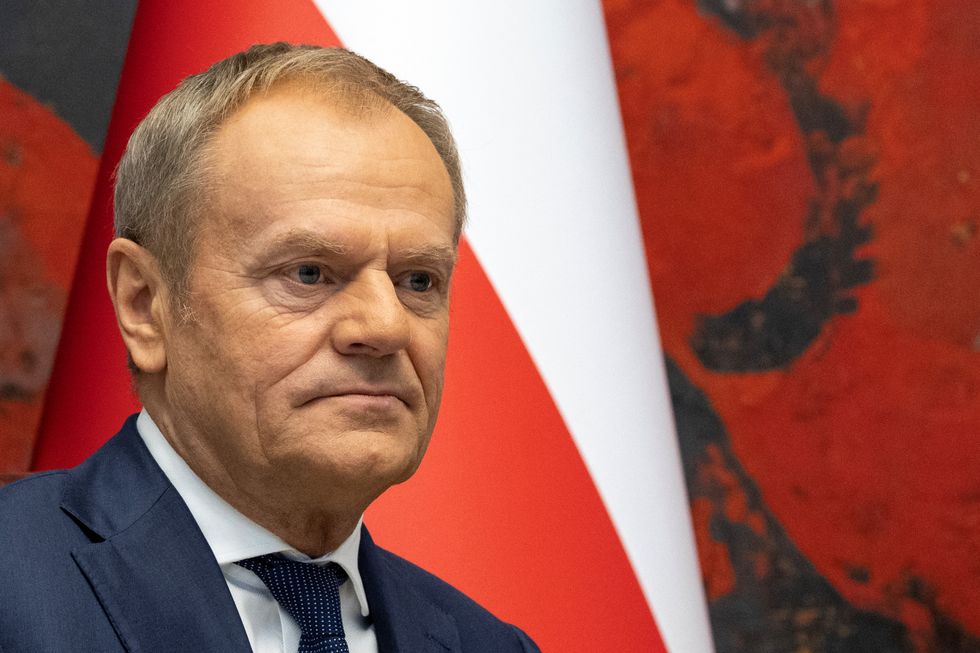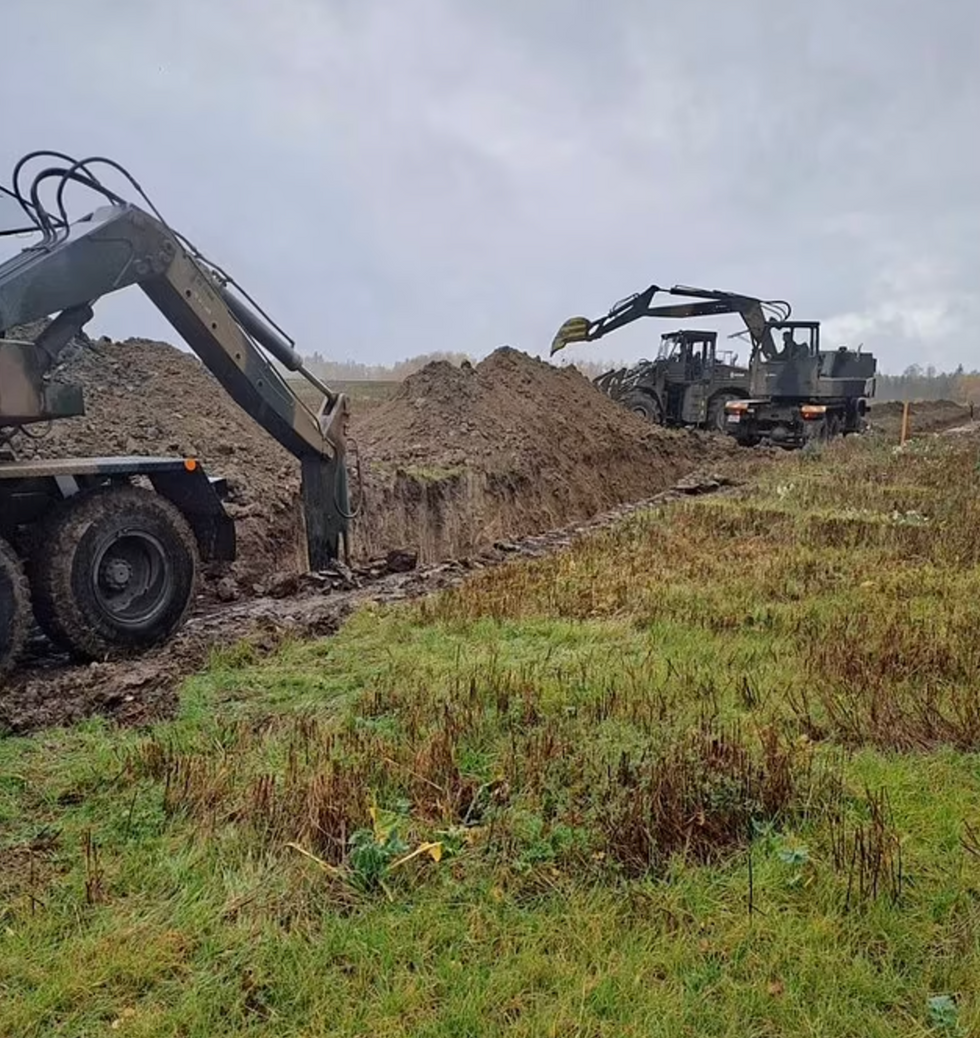Poland has begun construction of a massive £1.9billion defensive fortification system along its borders with Russia and Belarus.
The 400-mile ‘East Shield’ will incorporate cutting-edge technology and physical barriers to protect Nato’s eastern flank amid ongoing tensions with Russia.
The ambitious project, set for completion by 2028, will feature anti-tank fortifications, AI-powered surveillance systems, anti-drone capabilities and a network of bunkers.
Prime Minister Donald Tusk announced the start of construction, sharing an image of initial works at the Russian border.
The defensive system will also include a satellite component to provide “another element of safety in space” and prepare Poland for what Tusk called “the wars of the future”.
The new defensive system will employ state-of-the-art surveillance technologies, including imagery intelligence (IMINT), signals intelligence (SIGINT), and acoustic monitoring to enhance situational awareness.

Donald Tusk said the ‘east shield’ would act as a warning to Russia and Belarus
REUTERS
AI-powered systems will aid in early threat detection, responding to lessons learned from modern warfare in neighbouring conflicts.
The multi-layered defensive line will stretch approximately 200 metres deep, incorporating multiple security elements.
A high border fence will serve as the initial barrier, followed by layers of barbed wire and anti-tank trenches.
‘Dragon’s teeth’ – concrete blocks designed to halt armoured vehicles – will be strategically placed throughout the fortification.
The project comes in response to what Polish officials describe as ‘hybrid war’ tactics from Belarus and Russia, including increased migratory pressure on the eastern border.
“We do this to deter the enemy, so that all those who wish Poland ill, all those who plan an attack, an aggression against our allies or against our country, hear here today, from the Krakow Main Market Square: stay away from Poland!” Tusk declared at the initiative’s launch in May.

Donald Tusk shared images of the start of the construction on social media
DONALD TUSK / X
“Poland is strong, Poland will be safe thanks to its own actions and thanks to its own allies,” he added in July.
“The border cannot be crossed with impunity… It is Russia and Belarus behind this procedure, and the whole world calls it a hybrid war. We will not back down.”
Poland currently maintains the highest military spending per GDP among all Nato member countries, demonstrating its commitment to national defence.
The fortifications are specifically designed to counter potential threats from “the enemy”, with particular concern about the heavily militarised Russian exclave of Kaliningrad to the north.
The defensive infrastructure includes multiple layers of physical barriers designed to prevent unauthorised entry and military incursions.
Concealed within forests, bunkers and underground shelters will provide protection for border personnel if the main defences are breached.
The comprehensive system includes traditional defensive elements such as fences and ditches, alongside modern security measures.
Minefields will form part of the defensive perimeter, adding another layer of deterrence.
The multi-layered approach reflects Poland’s commitment to creating an impenetrable border shield against potential threats.
These fortifications are being constructed as part of a broader strategy to secure Nato eastern flank, with physical barriers complementing the high-tech surveillance systems.
The defensive line’s depth of 200 metres ensures multiple opportunities to detect and halt any potential incursion.
The Baltic states of Estonia, Latvia and Lithuania announced plans in January for their own “Baltic Defence Line” to complement Poland’s eastern defences.
The project, starting in 2025, will include bunkers, barriers and military warehouses along their borders with Russia and Belarus.
Estonian Defence Minister Hanno Pevkur said the defence line supports “Nato new forward defence concept” and could receive EU funding.
Poland’s neighbour Lithuania has already fortified a bridge connecting to Russia’s Kaliningrad exclave, with plans to fortify and potentially mine other crossings.
Kaliningrad poses particular concerns, with Poland’s foreign minister Radoslaw Sikorski warning in June that Russia could be storing up to 100 nuclear warheads in the territory.
The heavily armed exclave hosts Russia’s Baltic Sea Fleet headquarters and reportedly houses secret electronic weapons capable of jamming GPS technology.